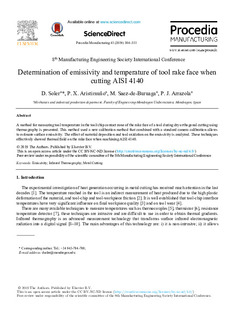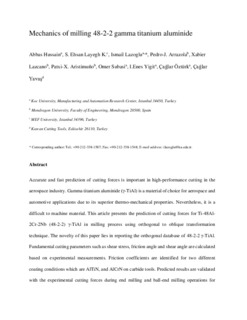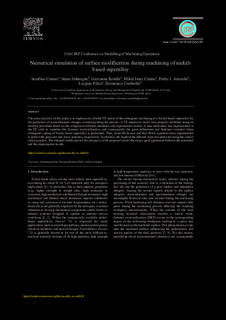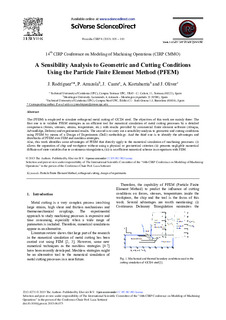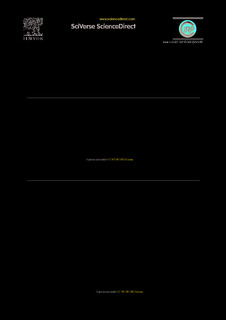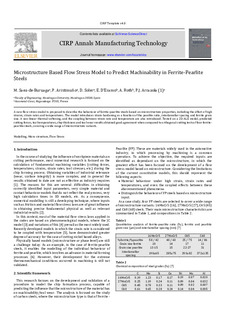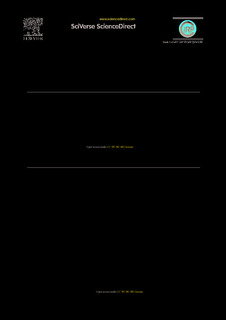Bilatu
66-tik 11-20 emaitza erakusten
Determination of emissivity and temperature of tool rake face when cutting AISI 4140
(Elsevier B.V., 2019)
A method for measuring tool temperature in the tool/chip contact zone of the rake face of a tool during dry orthogonal cutting using thermography is presented. This method used a new calibration method that combined with ...
Mechanics of milling 48-2-2 gamma titanium aluminide
(Elsevier Ltd., 2020)
Accurate and fast prediction of cutting forces is important in high-performance cutting in the aerospace industry. Gamma titanium aluminide (γ-TiAl) is a material of choice for aerospace and automotive applications due to ...
The contribution of microstructure and friction in broaching Ferrite–Pearlite steels
(Elsevier Ltd., 2020)
Ferrite-Pearlite (FP) steels are used in many automotive components. However, their machinability in low cutting speed processes appears to be highly dependent on their metallurgical state. An experimental approach combining ...
Estimación cualitativa de la rugosidad mediante algoritmos de aprendizaje automático en una operación de taladradoQualitative estimation of the roughness using automatic learning algorithms in a drilling operation
(Federación de Asociaciones de Ingenieros Industriales de España, 2020)
Evolution of residual stresses induced by machining in a Nickel based alloy under static loading at room temperature
(Elsevier, 2014)
Tensile residual stresses are very often generated on the surface when machining nickel alloys. In order to determine their influence on the final mechanical behaviour of the component residual stress stability should be ...
Numerical Simulation of Surface Modification During Machining of Nickel-based Superalloy
(Elsevier, 2015)
The main objective of this study is to implement a reliable FE model of the orthogonal machining of a Nickel based superalloy for the prediction of microstructural changes occurring during the process. A FE numerical model ...
A sensibility analysis to geometric and cutting conditions using the particle finite element method (PFEM)
(Elsevier, 2013)
The (PFEM) is employed to simulate orthogonal metal cutting of 42CD4 steel. The objectives of this work are mainly three: The first one is to validate PFEM strategies as an efficient tool for numerical simulation of metal ...
Simulation of distortion due to machining of thin-walled components
(Elsevier, 2013)
The distortion of components is strongly related to the residual stress state induced by manufacturing processes like heat treatment, forming or machining. Each process step affects the initial stress state of the following ...
Microstructure based flow stress model to predict machinability in ferrite–pearlite steels
(Elsevier Ltd., 2019)
A new flow stress model is proposed to describe the behaviour of ferrite–pearlite steels based on microstructure properties, including the effect of high strains, strain rates and temperatures. The model introduces strain ...
Multi revolution finite element model to predict machining induced residual stresses in Inconel 718
(Elsevier, 2013)
Inconel 718 is commonly used in structural critical components of aircraft engines due to its mechanical thermal properties at high temperatures, which makes it to be considered as a difficult to machine material. In these ...


